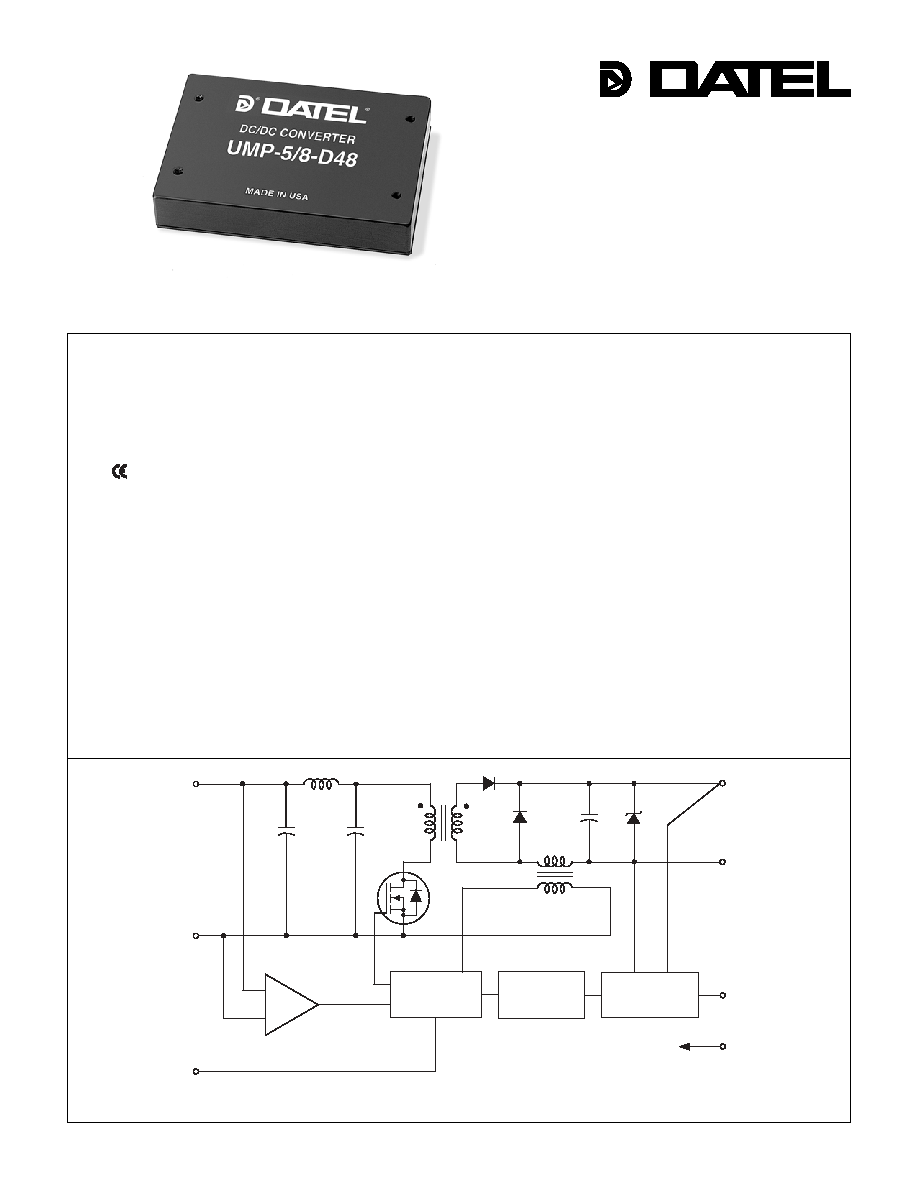
DATEL, Inc., Mansfield, MA 02048 (USA)
∑
Tel: (508)339-3000, (800)233-2765 Fax: (508)339-6356
∑
Email: sales@datel.com
∑
Internet: www.datel.com
INNOVATION and EX C ELL E N C E
Æ
Æ
Single Output
UMP Models
High-Efficiency, Smaller-Package
25-40 Watt, DC/DC Converters
Features
DATEL's UMP Models are fully potted, 25-40 Watt DC/DC converters designed to
meet UL1950 and EN60950 safety standards. The combination of the UMP's higher
efficiencies and thermally conductive potting compound enables these devices to
achieve higher operating temperatures without derating. The 2" x 3" UMP "footprint"
conforms with the standard pinout and pin geometries of most 3" x 3" devices (a 33%
space savings) while delivering as much as 60% more power (40W vs. 25W).
Applicable to a wide range of telecom, computer and other OEM applications, UMP
Model DC/DC's operate from four input voltage ranges (10-36V for "Q12" models, 18-
36V for "D24" models, 18-75V for "Q48" models, and 36-75V for "D48" models).
Available output voltages are 5, 12 and 15 Volts.
For reliability and affordability, DATEL exploits contemporary, high-speed,
automatic assembly to construct the UMP's traditional, field-proven, SMT-on-pcb
designs. Devices employ corrosion-resistant metal cases with plastic headers. Heat
generating transformer cores and power semiconductors are mounted directly to
the cases, which have threaded inserts for add-on heat sinks or pcb mounting.
Devices are specified for ≠40 to +100∞C operation and derating information is
provided for operation with/without heat sinks and forced air flow.
All devices feature input pi filters, input undervoltage and overvoltage shutdown,
output overvoltage protection, output current limiting, and thermal shutdown. UL,
CSA, EN and IEC compliance testing is currently in progress (75V-input devices will
be CE marked) as are full EMI/EMC characterizations. Contact DATEL for the latest
available information.
Figure 1. Simplified Schematic
COMMON
+V
OUT
+V
IN
≠V
IN
PWM
CONTROLLER
ISOLATION
REFERENCE &
ERROR AMP
COMPARATORS
UVLO & OVLO
ON/OFF
CONTROL
(SYNC)
TRIM
CASE
Higher operating temperatures
Fully potted
Designed to meet UL1950 and
EN60950 (basic insulation)
mark available (75V-input models)
Fully isolated, 1500Vdc guaranteed
25/30/35/40W output power
Standard pinout! Smaller size!
New 2" x 3" package fits 3" x 3" footprint
5V, 12V or 15V outputs
Four input voltage ranges:
10-36V, 18-36V
18-75V, 36-75V
High efficiency (to 85%)
Input under and overvoltage lockout
V
OUT
trim and on/off control
Modifications and customs for OEM's

2 5 - 4 0 W , S I N G L E O U T P U T D C / D C C O N V E R T E R S
XMP Series
BOTTOM VIEW
2.500
(63.50)
0.27
(6.86)
7
6
8
9
4
1
2
0.22
(5.59)
1.200
(30.48)
2.600
(66.04)
0.42
(10.67)
3.04
(77.22)
(4) THREADED INSERTS
#4-40 THD THRU
0.22
(5.59)
3
5
10
0.55
(13.97)
0.20 MIN.
(5.08)
0.040 ±0.002 DIA.
(1.016 ±0.051)
INSULATED
BASE
METAL
CASE
1.600
(40.64)
4 EQ. SP. @
0.400 (10.16)
2.04
(51.82)
2
UMP Model DC/DC Converters are classified, by output power, into 25, 30,
35 and 40 Watt devices. For the single-output devices listed above, the
maximum available output power is the product of the nominal output voltage
and the maximum allowable output current indicated within the part number
(see Part Number Structure). A UMP-5/6-Q48, for example, can source
6 Amps from its 5V output (over its entire 18-75V input voltage range)
delivering an output power of 30 Watts. A UMP-5/8-D48 can deliver
40 Watts.
Case C11
I/O Connections
Function P14
No Pin
≠Input
+Input
Case
On/Off Control*
No Pin
No Pin
Common
+V
OUT
Trim
Pin
1
2
3
4
5
6
7
8
9
10
Output Configuration:
U = Unipolar
Nominal Output Voltage:
5, 12 or 15 Volts
5
U MP
8
-
/
D48
-
Input Voltage Range:
Q12 = 10-36 Volts (24V nominal)
D24 = 18-36 Volts (24V nominal)
Q48 = 18-75 Volts (48V nominal)
D48 = 36-75 Volts (48V nominal)
Maximum Output Current
in Amps
Fully Potted Metal Package
Typical at T
A
= +25∞C under nominal line voltage and full-load conditions unless otherwise noted.
Ripple/Noise (R/N) measured over a 20MHz bandwidth.
10 to 100% load.
Nominal line voltage, no-load/full-load conditions.
Performance Specifications and Ordering Guide
R/N (mVp-p)
Load
V
OUT
(Volts)
Package
(Case,
Pinout)
Efficiency
Regulation (Max.)
Line
V
IN
Nom.
(Volts)
Range
(Volts)
Model
Input
I
IN
(mA)
Max.
Typ.
Typ.
Min.
UMP-5/5-Q12
5
5
75
100
±0.5%
±1%
24
10-36
50/1366
77%
79%
C11, P14
UMP-5/6-Q48
5
6
80
110
±0.5%
±1%
48
18-75
25/799
79%
80%
C11, P14
UMP-5/7-D24
5
7
75
100
±0.5%
±1%
24
18-36
25/1796
82%
83%
C11, P14
UMP-5/8-D48
5
8
75
100
±0.5%
±1%
48
36-75
25/1026
82%
84%
C11, P14
UMP-12/2.1-Q12
12
2.1
100
150
±0.5%
±1%
24
10-36
50/1326
80%
82%
C11, P14
UMP-12/2.5-Q48
12
2.5
100
150
±0.5%
±1%
48
18-75
30/770
82%
83%
C11, P14
UMP-12/3-D24
12
3
100
150
±0.5%
±1%
24
18-36
25/1825
82%
84%
C11, P14
UMP-12/3.3-D48
12
3.3
100
150
±0.5%
±1%
48
36-75
25/1004
83%
85%
C11, P14
UMP-15/1.7-Q12
15
1.7
100
150
±0.5%
±1%
24
10-36
50/1341
80%
82%
C11, P14
UMP-15/2-Q48
15
2
100
150
±0.5%
±1%
48
18-75
30/770
82%
83%
C11, P14
UMP-15/2.5-D24
15
2.5
100
150
±0.5%
±1%
24
18-36
25/1879
83%
84%
C11, P14
UMP-15/2.65-D48
15
2.65
100
150
±0.5%
±1%
48
36-75
25/1008
83%
85%
C11, P14
Optional Heat Sink (Part Number HS-23)
* See note 3 on next page.
I
OUT
(Amps)
P A R T N U M B E R S T R U C T U R E
M E C H A N I C A L S P E C I F I C A T I O N S
Output
Input
O U T P U T P O W E R C O N S I D E R A T I O N S
2.600
(66.04)
2.00
(50.80)
1.200
(30.48)
3.00
(76.20)
0.40
(10.16)
0.120 DIA. (3.048)
(4 PLACES)
MATERIAL: BLACK ANODIZED ALUMINUM
4 MOUNTING SCREWS AND 0.009 (0.229) THERMAL PAD INCLUDED
TOP VIEW
0.20
(5.08)
0.50
(12.70)
0.10
(2.54)

UMP Models
2 5 - 4 0 W , S I N G L E O U T P U T D C / D C C O N V E R T E R S
3
Performance/Functional Specifications
Typical @ T
A
= +25∞C under nominal line voltage and full-load conditions, unless noted.
Input
Input Voltage Range:
Q12 Models
10-36 Volts (24V nominal)
D24 Models
18-36 Volts (24V nominal)
Q48 Models
18-75 Volts (48V nominal)
D48 Models
36-75 Volts (48V nominal)
Undervoltage Lockout:
Q12 Models
9 Volts
D24 Models
17 Volts
Q48 Models
17 Volts
D48 Models
34 Volts
Input Current
See Ordering Guide
Input Filter Type
Pi
Overvoltage Shutdown:
D24 and Q12 Models
40 Volts
D48 and Q48 Models
80 Volts
Reverse-Polarity Protection
Yes (Instantaneous, 6A maximum)
On/Off Control (Pin 5)
TTL high (or open) = on, low = off
Output
V
OUT
Accuracy (50% load)
±1%, maximum
Temperature Coefficient
±0.02% per ∞C
Ripple/Noise (20MHz BW)
See Ordering Guide
Line/Load Regulation
See Ordering Guide
Efficiency
See Ordering Guide
Isolation Voltage
1500Vdc, minimum
Isolation Capacitance
130pF
Current Limiting
Continuous, auto-recovery
Overvoltage Protection
Zener/transorb clamp, magnetic feedback
Dynamic Characteristics
Transient Response (50% load step)
200µsec max. to ±1.5% of final value
Switching Frequency
165kHz (±10%)
Environmental
Operating Temperature (ambient):
Without Derating
≠40 to +50∞C (model dependent)
With Derating
to +100∞C (See Derating Curves)
Maximum Case Temperature
+100∞C
Storage Temperature
≠40 to +105∞C
Physical
Dimensions
2.04" x 3.04" x 0.55" (51.8 x 77.2 x 14mm)
Shielding
5-sided
Case Connection
Pin 4
Case Material
Aluminum, black anodized finish
with plastic header
Pin Material
Brass, solder coated
Weight
6 ounces (170 grams)
These converters require a minimum 10% output loading to maintain specified regulation.
Operation under no-load conditions will not damage these devices; however they may not
meet all listed specifications.
Application-specific input/output filtering can recommended or perhaps added
internally upon request. Contact DATEL Applications Engineering for details.
Applying voltage to the Control pin with no input power applied can damage the converter.
The On/Off function can be replaced with a Sync function. See page 3-48 for more details.
Listed spec is for input-to-output. Input-to-case and output-to-case isolation is 1000Vdc min.
Input Voltage:
Q12/D24 Models
44 Volts
Q48/D48 Models
88 Volts
Input Reverse-Polarity Protection
Current must be <6A. Brief
duration only. Fusing recommended.
Output Overvoltage Protection
5V Outputs
6.8 Volts, limited duration
12V Outputs
15 Volts, limited duration
15V Outputs
18 Volts, limited duration
Output Current
Current limited. Max. current and
short-circuit duration are model
dependent.
Storage Temperature
≠40 to +105∞C
Lead Temperature (soldering, 10 sec.)
+300∞C
These are stress ratings. Exposure of devices to any of these conditions may adversely
affect long-term reliability. Proper operation under conditions other than those listed in the
Performance/Functional Specifications Table is not implied.
Absolute Maximum Ratings
T E C H N I C A L N O T E S
Floating Outputs
Since these are isolated DC/DC converters, their outputs are "floating." Users
may ground either the Common (pin 8) for normal usage or the positive side
(+Output, pin 9) to effectively reverse the output polarity.
Filtering and Noise Reduction
All UMP 25-40 Watt DC/DC Converters achieve their rated ripple and noise
specifications without the use of external input/output capacitors. In critical
applications, input/output ripple and noise may be further reduced by
installing electrolytic capacitors across the input terminals and/or low-ESR
tantalum or electrolytic capacitors across the output terminals. The caps
should be located as close to the power converters as possible. Typical
values are listed in the tables below. In many applications, using values
greater than those listed will yield better results.
To Reduce Input Ripple
Q12/D24 Models
47µF, 50V
Q48/D48 Models
10µF, 100V
To Reduce Output Ripple
5V Outputs
47µF, 10V, Low ESR
12/15V Outputs
22µF, 20V, Low ESR
In critical, space-sensitive applications, DATEL may be able to tailor the
internal input/output filtering of these devices to meet your specific require-
ments. Contact our Applications Engineering Group for additional details.
Input Fusing
Certain applications and/or safety agencies may require the installation of fuses
at the inputs of power conversion components. For DATEL UMP
DC/DC Converters, you should use slow-blow type fuses with values no
greater than the following:
V
IN
Range
Fuse Value
Q12
4A
D24
4A
Q48
3A
D48
2A
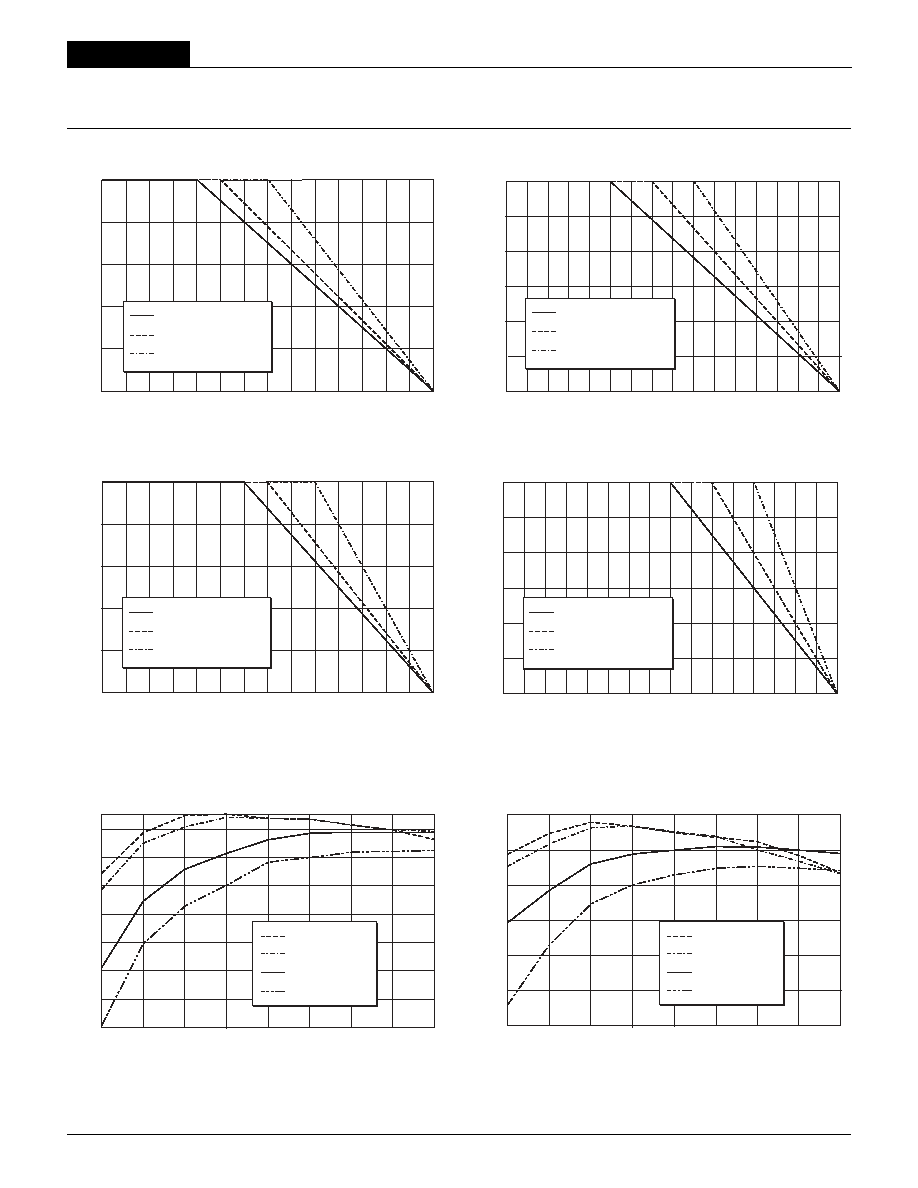
2 5 - 4 0 W , S I N G L E O U T P U T D C / D C C O N V E R T E R S
XMP Series
4
Output Power (Watts)
Ambient Temperature (∞C)
25
20
15
10
5
0
≠40
0 40 45 50 55 60 65 70 75 80 85
90 95 100
Natural Convection Cooling
150 Linear Feet Per Minute
300 Linear Feet Per Minute
Output Power (Watts)
Ambient Temperature (∞C)
25
20
15
10
5
0
≠40
0 40 45 50 55 60 65 70 75 80 85
90 95 100
Natural Convection Cooling
150 Linear Feet Per Minute
300 Linear Feet Per Minute
Efficiency (%)
Output Current (Amps)
0.56
1.11 1.67 2.22 2.78 3.33 3.89 4.44 5
80
75
70
65
60
55
50
45
82.5
Efficiency @ 10V
IN
Efficiency @ 12V
IN
Efficiency @ 24V
IN
Efficiency @ 36V
IN
Output Power (Watts)
Ambient Temperature (∞C)
30
25
20
15
10
5
0
≠40 0
30
35
40
45
50
55 60 65 70 75 80 85 90 95 100
Natural Convection Cooling
150 Linear Feet Per Minute
300 Linear Feet Per Minute
Output Power (Watts)
Ambient Temperature (∞C)
≠40 0
30
35
40
45
50
55 60 65 70 75 80 85 90 95 100
30
25
20
15
10
5
0
Natural Convection Cooling
150 Linear Feet Per Minute
300 Linear Feet Per Minute
Efficiency (%)
Output Current (Amps)
0.67
1.33
2 2.67 3.33 4 4.67 5.33 6
86
82
78
74
70
66
62
Efficiency @ 18V
IN
Efficiency @ 24V
IN
Efficiency @ 48V
IN
Efficiency @ 72V
IN
Figure 2a. Temperature Derating Without Heat Sink
Figure 2b. Temperature Derating With Heat Sink
Figure 2c. Efficiency vs. Output Current and Input Voltage
Figure 3a. Temperature Derating Without Heat Sink
Figure 3b. Temperature Derating With Heat Sink
Figure 3c. Efficiency vs. Output Current and Input Voltage
Temperature Derating and Electrical Performance Curves
Q48 Models (30 Watts)
Q12 Models (25 Watts)
Model UMP-5/6-Q48
Model UMP-5/5-Q12
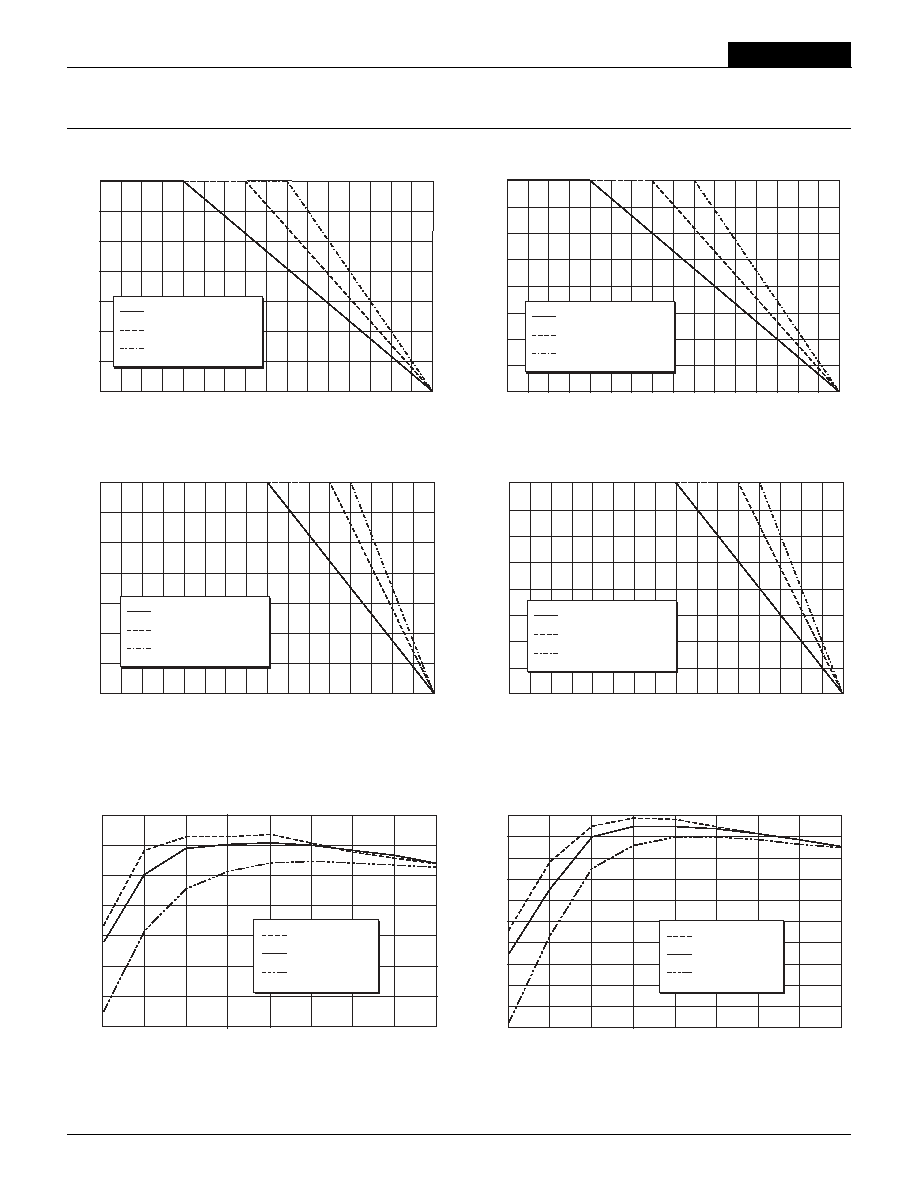
UMP Models
2 5 - 4 0 W , S I N G L E O U T P U T D C / D C C O N V E R T E R S
5
Output Power (Watts)
Ambient Temperature (∞C)
35
30
25
20
15
10
5
0
≠40 0
30
35
40
45
50
55 60 65 70 75 80 85 90 95 100
Natural Convection Cooling
150 Linear Feet Per Minute
300 Linear Feet Per Minute
Output Power (Watts)
Ambient Temperature (∞C)
35
30
25
20
15
10
5
0
≠40 0
30
35
40
45
50
55 60 65 70 75 80 85 90 95 100
Natural Convection Cooling
150 Linear Feet Per Minute
300 Linear Feet Per Minute
40
35
30
25
20
15
10
5
0
Output Power (Watts)
Ambient Temperature (∞C)
≠40 0
30
35
40
45
50
55 60 65 70 75 80 85 90 95 100
Natural Convection Cooling
150 Linear Feet Per Minute
300 Linear Feet Per Minute
E
f
ficiency (
%
)
Output Current (Amps)
0.5
1
2
3
4
5
6
7
8
88
86
84
82
80
78
76
74
72
70
68
Efficiency @ 36V
IN
Efficiency @ 48V
IN
Efficiency @ 72V
IN
Figure 4a. Temperature Derating Without Heat Sink
Figure 4b. Temperature Derating With Heat Sink
Figure 4c. Efficiency vs. Output Current and Input Voltage
Figure 5a. Temperature Derating Without Heat Sink
Figure 5b. Temperature Derating With Heat Sink
Figure 5c. Efficiency vs. Output Current and Input Voltage
Temperature Derating and Electrical Performance Curves
Model UMP-5/8-D48
Model UMP-5/7-D24
D48 Models (40Watts)
D24 Models (35 Watts)
Efficiency (%)
Output Current (Amps)
0.77
1.56 2.33 3.11 3.89 4.67 5.44 6.22 7
88
86
84
82
80
78
76
74
Efficiency @ 18V
IN
Efficiency @ 24V
IN
Efficiency @ 36V
IN
Output Power (Watts)
Ambient Temperature (∞C)
40
35
30
25
20
15
10
5
0
≠40
0 30 35 40 45 50 55 60 65 70 75 80 85 90 95 100
Natural Convection Cooling
150 Linear Feet Per Minute
300 Linear Feet Per Minute
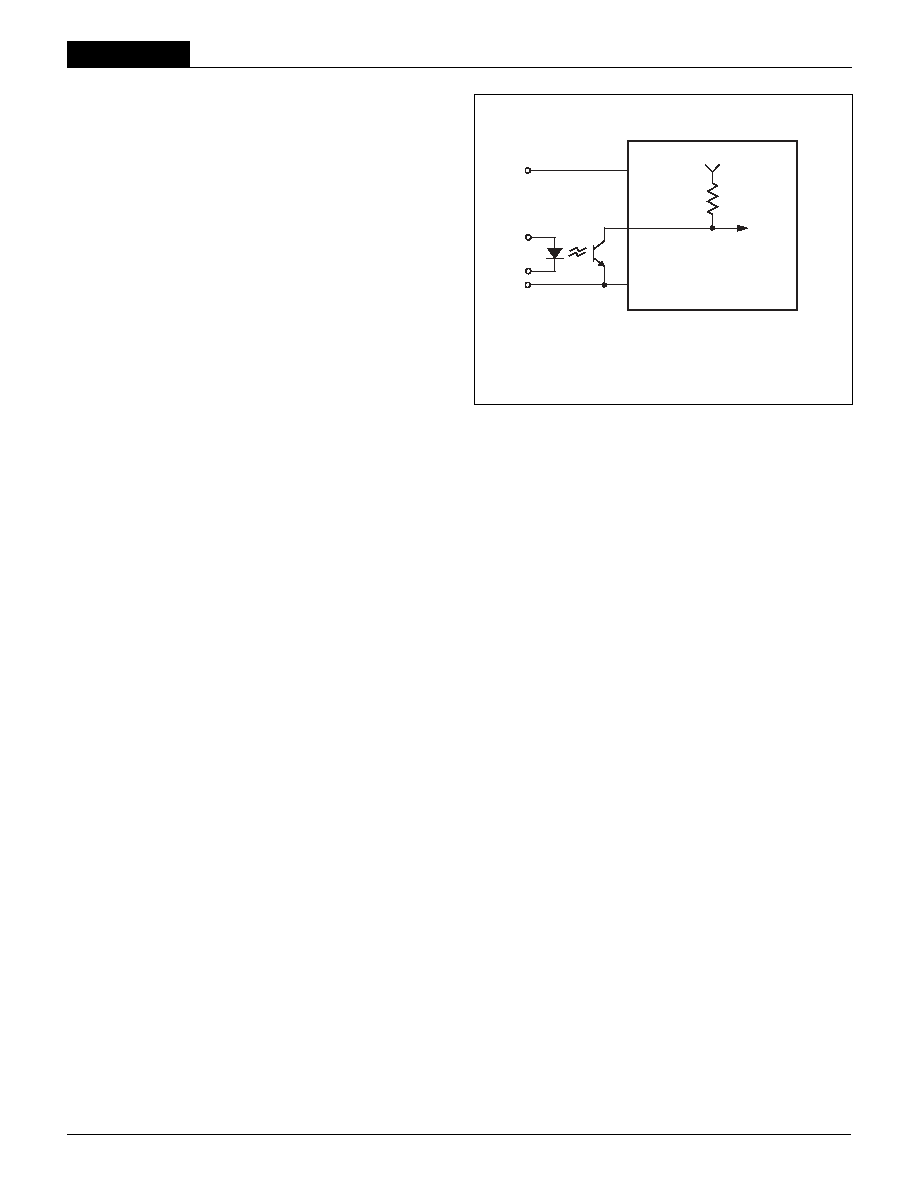
2 5 - 4 0 W , S I N G L E O U T P U T D C / D C C O N V E R T E R S
XMP Series
6
Case Connection
Unlike most other DC/DC converters, UMP DC/DC's do not have their metal
case connected to one of their input pins. The "uncommitted" case is
connected to pin 4 which, depending on your system configuration, should be
connected to either +Input (pin 3) or ≠Input (pin 2).
On/Off Control (Standard)
The On/Off Control pin (pin 5) may be used for remote on/off operation. As
shown in Figure 6, the control pin has an internal 10k
pull-up resistor to
approximately 10V. The converter is designed so that it is enabled when the
control pin is left open (normal mode) and disabled when the control pin is
pulled low (to less than +0.8V relative to ≠Input, pin 2).
Dynamic control of the on/off function is best accomplished with a mechani-
cal relay or an open-collector/open-drain drive circuit (optically isolated if
appropriate). The drive circuit should obviously be able to sink approximately
1mA when activated and withstand more than 10 Volts when deactivated.
Applying an external voltage to pin 5 when no input power is applied to the
converter can cause permanent damage to the converter. The on/off control
function, however, is designed such that the converter can be disabled (pin 5
pulled low) while input power is ramping up and then "released" once the
input has stabilized. Under these circumstances, it takes approximately 30ms
for the output of the fully loaded DC/DC to ramp up and settle to within ±1%
of its final value after the converter has been turned on.
Synchronization (Optional)
In critical applications employing multiple switching DC/DC converters, it may
be desirable to intentionally synchronize the switching of selected converters
(so the system noise can be reduced with notch filtering) or to purposely
desynchronize the converters (to lessen the current-carrying requirements on
intermediate dc buses). UMP DC/DC Converters have been designed so that
the On/Off Control function on pin 5 can be replaced with a Sync function. This
change has to be implemented by DATEL during the product assembly
process. Contact our Applications Engineering Group for additional details.
To synchronize the switching of multiple UMP converters configured with the
Sync function, an external clock can be applied to pin 5 of each converter.
The clock should be a TTL square wave referenced to ≠Input (logic high =
+2 to +5 Volts, 250µA max.; logic low = 0 to +0.8 Volts, 70µA max.) with a
maximum 1µsec "high" duration. The frequency of the synchronizing clock
should be higher than that of any individual converter. Therefore, it should be
185kHz ±5kHz.
Output Trimming
V
OUT
may be trimmed ±5% via a single trimpot or fixed resistor. The trimpot
should be connected between +Output (pin 9) and Common (pin 8) with its
wiper connected to pin 10 (Trim). A trimpot can also be used to determine the
value of a single fixed resistor which can be connected between pin 10 (Trim)
and pin 9 (+Output) to trim "down" the output voltages, or between pins 10
(Trim) and 6 (≠Output) to trim "up" the output voltages. Fixed resistors should
be metal-film types with absolute TCR's less than 100ppm/∞C to ensure
stability.
+INPUT
≠INPUT
3
2
+10V
10k
9
5
ON/OFF
CONTROL
Figure 6. Driving the On/Off Control Pin
6

UMP Models
2 5 - 4 0 W , S I N G L E O U T P U T D C / D C C O N V E R T E R S
7
DATEL's world-class design, development and manufacturing team stands
ready to work with you to deliver the exact power converter you need for your
demanding, large volume, OEM applications. More importantly . . . we'll do it
on time and within budget!
Our experienced applications and design staffs; quick-turn prototype
capability; highly automated, SMT assembly facilities; and in-line SPC
quality-control techniques combine to give us the unique ability to design and
deliver any quantity of power converters to the highest standards of quality
and reliability.
We have compiled a large library of DC/DC designs that are currently used in
a variety of telecom, medical, computer, railway, aerospace and industrial
applications. We may already have the converter you need.
Contact us. Our goal is to provide you the highest-quality, most cost-effective
power converters available.
If you're designing with EMC in mind, please note that all of DATEL's UMP
25-40 Watt DC/DC Converters have been characterized for radiated and
conducted emissions in our new EMI/EMC laboratory. Testing is conducted in
an EMCO 5305 GTEM test cell utilizing EMCO automated EMC test software.
Radiated emissions are tested to the limits of FCC Part 15, Class B and
CISPR 22 (EN 55022), Class B. Correlation to other specifications can be
supplied upon request. Radiated emissions plots to FCC and CISPR 22 for
model UMP-5/8-D48 appear below. Published EMC test reports are available
for each model number. Contact DATEL's Applications Engineering
Department for more details.
80
70
60
50
40
30
20
10
0
≠10
≠20
Frequency (MHz)
100
1000
FCC Class B Limit
UMP-5/8-D48 Radiated Emissions
FCC Part 15 Class B, 3 Meters
Converter Output = +5Vdc @ +6.45 Amps
R
a
d
i
ated
E
m
i
s
si
on
s (dB
µ
V
/
M
)
Radiated Emissions
UMP-5/8-D48 Radiated Emissions
EN 55022 Class B, 10 Meters
Converter Output = +5Vdc @ +6.45 Amps
80
70
60
50
40
30
20
10
0
≠10
≠20
Frequency (MHz)
100
1000
Radiated Emissions
EN 55022 Class B Limit
R
a
d
i
ated
E
m
i
s
si
on
s (dB
µ
V
/
M
)
C U S T O M C A P A B I L I T I E S
E M I R A D I A T E D E M I S S I O N S
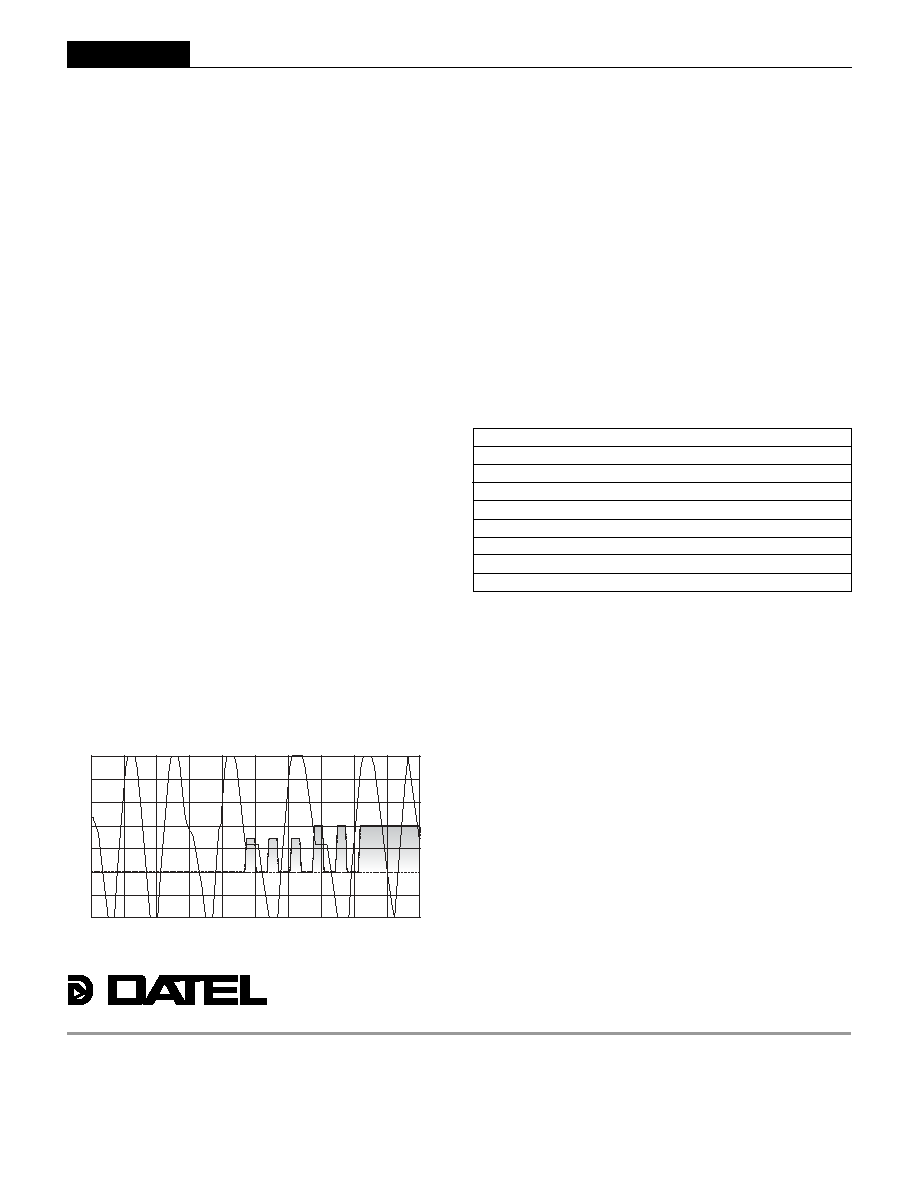
2 5 - 4 0 W , S I N G L E O U T P U T D C / D C C O N V E R T E R S
XMP Series
DATEL makes no representation that the use of its products in the circuits described herein, or the use of other technical information contained herein, will not infringe upon existing or future patent rights. The descriptions contained herein
do not imply the granting of licenses to make, use, or sell equipment constructed in accordance therewith. Specifications are subject to change without notice. The DATEL logo is a registered DATEL, Inc. trademark.
DATEL (UK) LTD. Tadley, England Tel: (01256)-880444
DATEL S.A.R.L. Montigny Le Bretonneux, France Tel: 01-34-60-01-01
DATEL GmbH M¸nchen, Germany Tel: 89-544334-0
DATEL KK Tokyo, Japan Tel: 3-3779-1031, Osaka Tel: 6-6354-2025
DATEL, Inc. 11 Cabot Boulevard, Mansfield, MA 02048-1151
Tel: (508) 339-3000 (800) 233-2765 Fax: (508) 339-6356
Internet: www.datel.com Email: sales@datel.com
Data Sheet Fax Back: (508) 261-2857
DS-0393 4/01
Quality and Reliability
The UPB Models are the latest DC/DC Converters to emerge from DATEL's
new, company-wide approach to designing and manufacturing the most
reliable power converters available. The five-pronged program draws our
Quality Assurance function into all aspects of new-product design, develop-
ment, characterization, qualification and manufacturing.
Design for Reliability
Design for Reliability is woven throughout our multi-phased, new-product-
development process. Design-for-reliability practices are fully documented
and begin early in the new-product development cycle with the following
goals:
1. To work from an approved components/vendors list ensuring the use of
reliable components and the rigorous qualification of new components.
2. To design with safety margins by adhering to a strict set of derating
guidelines and performing theoretical worst-case analyses.
3. To locate potential design weaknesses early in the product-development
cycle by using extensive HALT (Highly Accelerated Life Testing).
4. To prove that early design improvements are effective by employing a
thorough FRACA (Failure Reporting Analysis and Corrective Action) system.
HALT Testing
The goal of the accelerated-stress techniques used by DATEL is to force
device maturity, in a short period of time, by exposing devices to excessive
levels of "every stimulus of potential value." We use HALT (Highly Acceler-
ated Life Testing) repeatedly during the design and early manufacturing
phases to detect potential electrical and mechanical design weaknesses
that could result in possible future field failures.
During HALT, prototype and pre-production DC/DC converters are subjected
to progressively higher stress levels induced by thermal cycling, rate of
temperature change, vibration, power cycling, product-specific stresses (such
as dc voltage variation) and combined environments. The stresses are not
meant to simulate field environments but to expose any weaknesses in a
product's electro/mechanical design and/or assembly processes. The goal of
HALT is to make products fail so that device weaknesses can be analyzed
and strengthened as appropriate. Applied stresses are continually stepped
up until products eventually fail. After corrective actions and/or design
changes, stresses are stepped up again and the cycle is repeated until the
"fundamental limit of the technology" is determined.
DATEL has invested in a Qualmark OVS-1 HALT tester capable of applying
voltage and temperature extremes as well as 6-axis, linear and rotational,
random vibration. A typical HALT profile (shown above) consists of thermal
cycling (≠55 to +125∞C, 30∞C/minute) and simultaneous, gradually
increasing, random longitudinal and rotational vibration up to 20G's with load
cycling and applied-voltage extremes added as desired. Many devices in
DATEL's new A-Series could not be made to fail prior to reaching either the
limits of the HALT chamber or some previously known physical limit of the
device. We also use the HALT chamber and its ability to rapidly cool devices
to verify their "cold-start" capabilities.
Qualification
For each new product, electrical performance is verified via a comprehensive
characterization process and long-term reliability is confirmed via a rigorous
qualification procedure. The qual procedure includes such strenuous tests
as thermal shock and 500 hour life. Qual testing is summarized below.
In-Line Process Controls and Screening
A combination of statistical sampling and 100% inspection techniques keeps
our assembly line under constant control. Parameters such as solder-paste
thickness, component placement, cleanliness, etc. are statistically sampled,
charted and fine tuned as necessary. Visual inspections are performed by
trained operators after pick-and-place, soldering and cleaning operations.
Units are 100% electrically tested prior to potting. All devices are tempera-
ture cycled, burned-in, hi-pot tested and final-electrical tested prior to external
visual examination, packing and shipping.
Rapid Response to Problems
DATEL employs an outstanding corrective-action system to immediately
address any detected shortcomings in either products or processes.
Whenever our assembly, quality or engineering personnel spot a product/
process problem, or if a product is returned with a potential defect, we
immediately perform a detailed failure analysis and, if necessary, undertake
corrective actions. Over time, this system has helped refine our assembly
operation to yield one of the lowest product defect rates in the industry.
Typical HALT Profile
Qualification Test
Method/Comments
HALT
DATEL in-house procedure
High Temperature Storage
Max. rated temp., 1,000 hours
Thermal Shock
10 cycles, ≠55 to +125∞C
Temperature/Humidity
+85∞C, 85% humidity, 48 hours
Lead Integrity
DATEL in-house procedure
Life Test
+70∞C, 500 hours*
Marking Permanency
DATEL in-house procedure
End Point Electrical Tests
Per product specification
Qualification Testing
* Interim electrical test at 200 hours.
10 20 30 40 50 60 70 80 90
40
20
0
Random
Vi
br
at
i
o
n (
G
'
s
)
Tem
p
er
at
ure (
∞
C)
Test Time (minutes)
100
80
60
40
20
0
≠20
≠40
2 5 - 4 0 W , S I N G L E O U T P U T D C / D C C O N V E R T E R S
XMP Series
INNOVATION and EX C ELL E N C E
Æ
Æ
8
ISO-9001 REGISTERED







